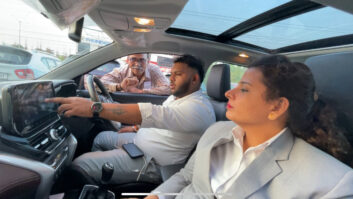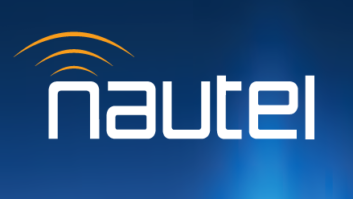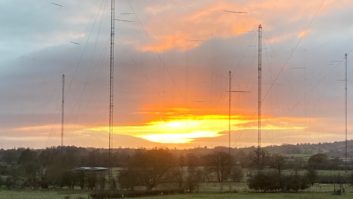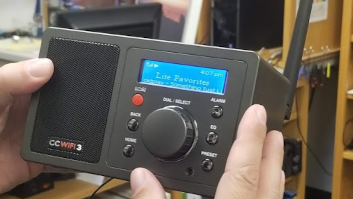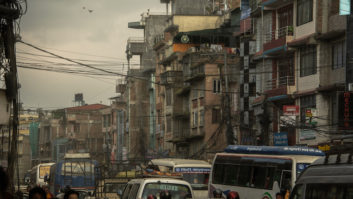The author is chairman of Digital Radio Mondiale.
Does medium wave still have a place in the radio landscape? Some people think so.
A medium wave commercial station called Love Sport Radio (on 558 MW) recently began broadcasting from London, and will later be available via digital as well. The BBC also has a very popular station featuring sport and speech called BBC Radio 5 live on medium wave and digital.

So, it appears as if the listeners’ appetite for sport, banter and a bit of humor is increasing, and also that medium wave remains the first option for broadcasters to reach sports lovers over the country or capital. And even though Love Sport Radio will presumably not use an AM transmitter from GatesAir, after a recent announcement that the company was suspending the sale of its AM transmitters, is there a constructive way forward for medium wave overall?
GatesAir’s decision to evaluate the medium wave market might be a direct consequence of many broadcasters shutting off analog medium wave. Take the BBC, for example, which switched off some of its domestic medium wave coverage, or other European broadcasters who see the medium as energy inefficient, expensive and a legacy technology that does not fit in with the age of podcasts. But then again, naysayers have been calling radio — including analog medium wave — dead for many years.
In parallel, or as an answer to this declared radio obituary, the EBU Director General praises radio and doesn’t see it dead but “Over 100 Years Young.” He recently quoted a very recent EBU report that shows radio being the most trusted form of media (trusted by nearly 60 percent of the European population). Some might say the figure would be even higher if more medium wave transmitters had been kept on air and were digitized.
[Read: Radio Over 100 Years Young]
In the United States, Nielsen tells us that 93 percent of adults over the age of 18 tune into FM and AM (medium wave) radio each week. The number ticks up to 95 percent when considering just those between the ages of 35 and 49. So AM and FM are popular (though a bit less so with the teen listeners). Square this with the fact that in the U.S., i-Heart Media, the country’s largest analog FM and AM station, recently went bust, having paid about US$1.5 billion in interest on debts only last year.
Are you confused yet? If so, that would be understandable, since there exist many different and contradictory perspectives. There are those who are waiting for 5G to revive radio or audio. But I tend to agree with Reiner Mueller, a top IT manager at the Bavarian State Centre for New Media in Munich, who thinks that there will be so many demands on 5G, when it happens in 2025 or beyond, that it is questionable if 5G would succeed as an important digital transmission path for radio at all. Then there are those who believe that diversification is prudent, like the BBC head of radio who wants a mixed FM, digital and hybrid economy to continue with no digital switchover date set until the audience makes up its mind, or the government.
[Read: EBU Says Radio Is Most Trusted Medium in Europe]
Further away from such complex evaluations are those who have looked at their rusting medium wave transmitters and have decided to go digital. In India 35 new DRM medium wave transmitters are beaming digital signals. In some very populated areas of India there is much more (information, internet content, educational information, disaster warnings) available than “just” audio. These signals (and their additional benefits) are available to over 600 million Indians now. Neither FM nor DAB can offer this kind of access to radio.
Shortwave and medium wave broadcast bands can cover large areas. Medium wave transmitters deliver excellent coverage for long distances as the signal propagation is along the earth’s surface. Most broadcasters worldwide have been using medium wave and shortwave bands for free-to-air broadcasting for years. But, and there is one but, in-band transmissions use Amplitude Modulation, and in the analog mode this results in quality degradation — on medium wave this is due to noise generated by industrialization. To remain relevant medium wave and shortwave bands must therefore be digitized in order to guarantee the necessary quality listeners wants, along with more capacity, value-added services and to also fill the gaps for FM or DAB transmitters.
[Read: What Is Local Radio’s Digital Future?]
Thanks to Digital Radio Mondiale, all the justified criticisms of analog medium wave (poor sound, high operational costs etc.) have been eliminated. So why is it that we aren’t seeing more broadcasters move to digital medium wave instead of simply abandoning entire transmitters sites? We see digital medium wave taking hold in India and there are plans in other parts of the world but what about Europe (with the exception of Hungary that recently installed a huge medium wave DRM transmitter) and the U.S.?
One reason might be the very name “medium wave,” which sounds so old-fashioned. In reality, the digitized version of the medium offers exceptional digital audio quality and extra bells and whistles. A deeper reason might be that digital radio has been promoted exclusively from the technology platforms upward, rather than starting from a broadcaster and listener needs and benefits perspective.
[Watch: Digital Radio Mondiale Drives Forward]
Maybe it’s time to start talking digital radio only and not just focusing on the specific standards (DRM, DAB or HD). Why not have a single organization promote the two open digital standards. This would provide complete solutions to meet requirements, coverage demands and scenarios. It would also encourage listeners to embrace digital radio faster, with more confidence and help convince them to invest a small sum in a new receiver. In short, digital radio (as a whole) would be stronger, better understood and promoted.
Analog radio is not dead, of course, but digital terrestrial radio still has some ground to cover in order to finally be considered more than just an experiment, trial or a modest add-on to analog and IP platforms.

